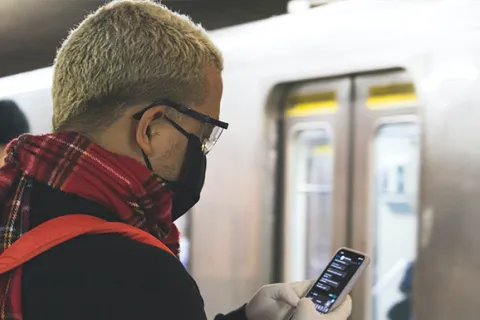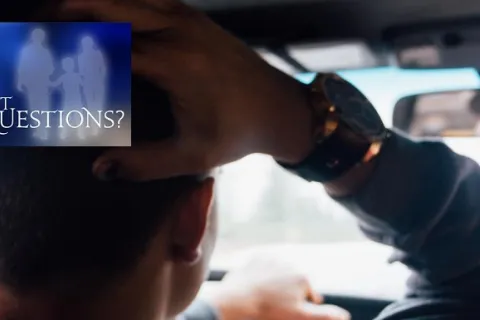Helping Children with Autism Get Ready for the School Bus
By J-Jaye HurleyThis is a post by J-Jaye Hurley, proud mother to Jackson (age 13), an 8th-grader with autism and a seasoned school bus rider. J-Jaye also is a member of our Autism Response Team.
Lots of kids ride a bus to school. If your child has autism, the bus ride may be a challenge. Getting your child ready for the ride and working ahead of time with school and bus staff can help make the school days go more smoothly.
How can you help prepare your child to ride the bus to school?
My son Jackson has been riding the school bus for years. Each year when school starts we create a bus personalized teaching story. The story helps remind Jackson of what’s expected of him on the bus, like keeping his hands to himself and listening to the driver. It also helps him see what comes next and what happens each time he rides the bus. To create a teaching story, use our Templates for Personalized Teaching Stories.
A teaching story can be helpful to first-time bus riders. But it’s also great for returning students. Things like routes, drivers and bus numbers can change from year to year. Putting these changes into a teaching story can help your child know what to expect when he starts back to school.
Some schools offer a trial run on the bus in the days before school starts. You and your child can meet the bus driver and even get on and ride the bus. Taking a comfort item on the bus also may be helpful for children during the first few days back to school.
What are some challenges that children with autism may face on a school bus?
Taking the bus to and from school may not be easy for students with ASD. For example, they have to listen to the bus driver or bus aide. They have to follow bus rules that are different than classroom rules. And they may have to sit next to other students and respect their personal space. These things may be hard for someone with autism.
Riding a bus can be overwhelming from a sensory standpoint. There are many loud bus noises (and other students) that can upset a child with sound sensitivity. And there may be a lot of “unknowns” on the bus. For example, the bus route may change, or the bus may get stuck in traffic. Or there may be a substitute driver or more kids on the bus than usual.
To help children manage challenges, reduce fear and prevent problem behaviors:
- Talk with them about how to handle situations that come up.
- Add the challenges to the personalized teaching story.
- Help them have a plan for sensory issues (the way your child responds to senses of sight, sound, taste, smell, touch, pain and balance). For example, children may wear headphones to help reduce noise. Or they may need to have a sensory-stimulating toy, like a fidget, to help them stay calm and reduce stress.
- Ensure that you’ll be there at the end of the day.
How do you get special accommodations for a child with ASD?
Some students with autism ride a neighborhood school bus. Others may ride a special education bus that has specific accommodations (changes or adjustments) to meet their individual needs. You decide on the kind of bus and the accommodations your child needs at an individualized education program (IEP) meeting. An IEP helps make sure that a student with autism gets the best possible services in school.
Jackson has a medical condition that causes overheating, so he rides a special education bus that’s climate-controlled. He also has epilepsy, so he has an aide on the bus each day to help him if he has a seizure. Other students may need special safety harnesses or seat belts. Address any decisions like these at an IEP meeting at any time during the school year.
What do you do if your child has a negative experience on the bus?
Unfortunately, research tells us that children with autism are likely to experience bullying. A survey by the Interactive Autism Network showed that children with ASD are bullied at a very high rate and often are intentionally “triggered” into meltdowns or aggressive outbursts by their peers. Review our Combating Bullying page for tips on how to handle bullying.
If your child faces bullying or other problems on the bus, immediately tell key people who can address the problem, including:
- Your child’s teacher
- The bus driver
- School administration staff
- The special education transportation director
Some students need a behavior plan for the bus. The plan can include things like allowing students to bring a fidget or comfort item on the bus or moving students to the front of the bus. It also can include ways for staff to reinforce a student’s positive behavior.
How do you help the bus driver and other staff get to know your child?
Our back-to-school plans always include putting together an “All about Me: Jackson” information packet. I share this with the entire school community—with the school nurse, the principal and with Jackson’s teacher, paraprofessional, bus driver and aide. In school, a paraprofessional is someone who assists teachers and students but who doesn’t have a license to be a teacher. The packet is easy to make and is a great way to let the team learn about your child’s:
- Likes and dislikes
- Sensory concerns
- Safety plan. This can include how to contact parents and healthcare providers, instructions if your child needs constant supervision on the bus, and ways to help prevent wandering. For more information about wandering, see our Wandering Prevention Resources.
- Communication preferences. For example, does your child use verbal communication (speech) or a type of augmentative and alternative communication (AAC), like a picture exchange communication system (PECS).
The packet also helps staff anticipate issues and behavior triggers and identify ways to support your child. To learn more about what to share with the bus driver or to find an “All about me” template, see our School Community Tool Kit.
Overall, Jackson really likes riding the bus—he’s ready to go with his backpack and headphones each school day (but he doesn’t like it when the bus is running late!). By reading our personalized teaching story together, identifying his accommodations in the IEP meeting and communicating openly with school and bus staff, Jackson is better prepared for a successful day of learning and fun!









